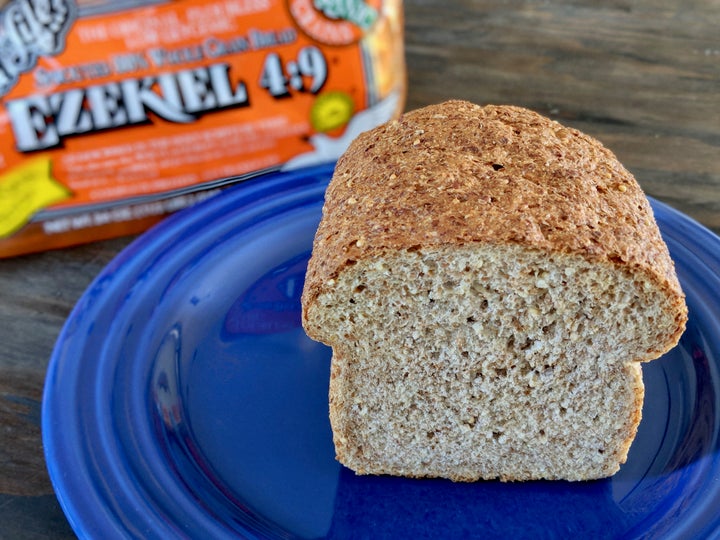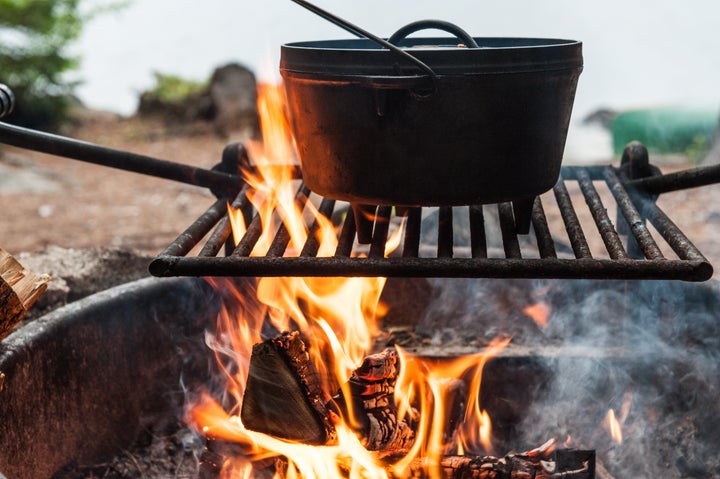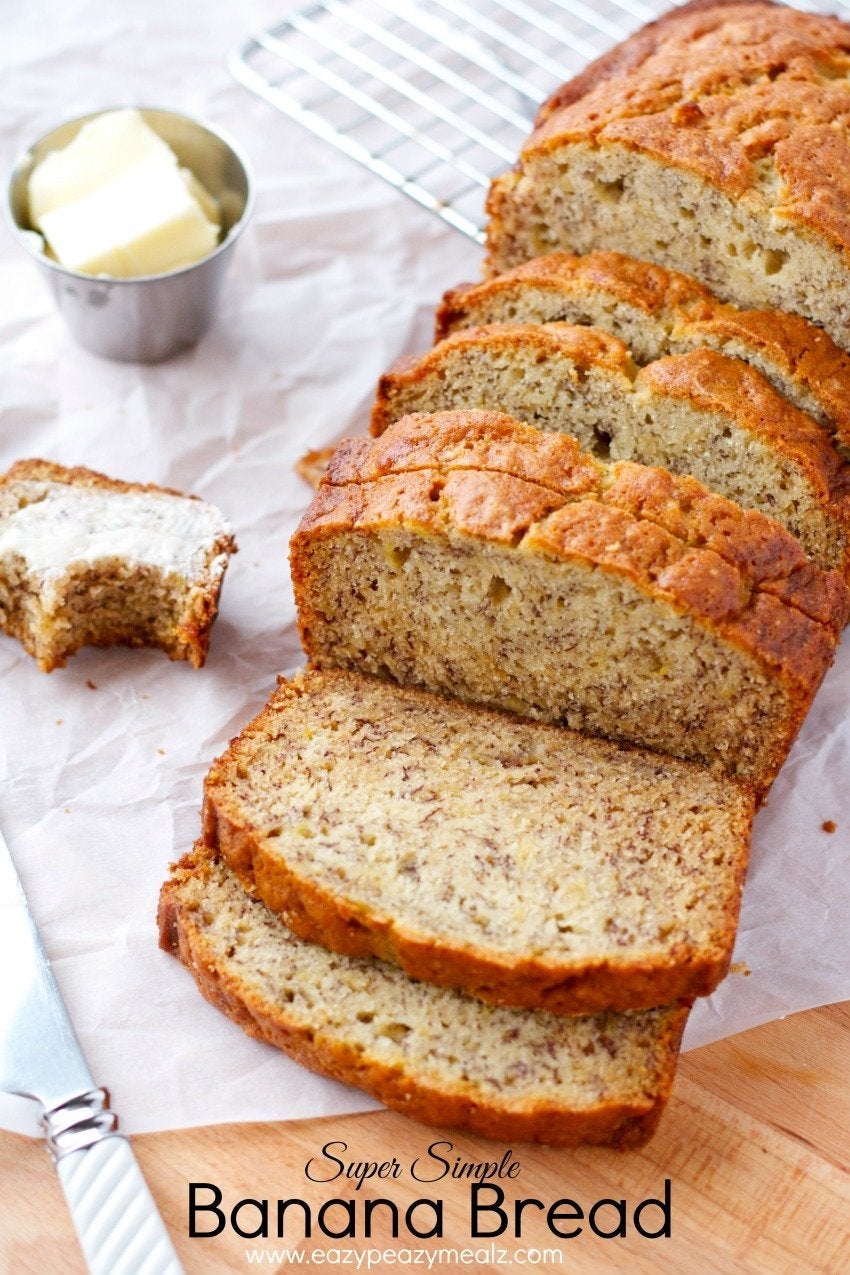
I’ve passed Ezekiel 4:9 bread in the supermarket a million times and never gave it a second glance. But I recently wondered what the Ezekiel 4:9 verse actually says.
I Googled it, and came across a funny article from Religion News Service about how Ezekiel bread was originally supposed to be baked on human dung, so of course I became confused. Why would anyone do that? That sent me down a rabbit hole of learning more about both the verse and the bread.
The makers of Ezekiel 4:9 bread, Food for Life, declined to comment for this story. “Thanks again for your interest in highlighting Food for Life,” marketing manager Gary Torres said in an email. “Having said that, in an effort to ensure consistent messaging throughout the marketplace, we would respectfully decline participation at this time.” Instead, I spoke to a religious scholar and a nutritionist to shed some light on all things Ezekiel 4:9. This is the weird story behind Ezekiel 4:9 and the bread it inspired.
Behind the actual verse, Ezekiel 4:9
Before we get into how the bread company got started, I had questions about Ezekiel 4:9, so I asked Larry Yarbrough. He joined the religion department at Vermont’s Middlebury College in 1983, and is currently the Pardon Tillinghast professor of religion. Before we dove into the Scripture, he told me he keeps Ezekiel 4:9 (the bread, not the verse) in his freezer regularly, and that he likes the taste.
Here’s what Ezekiel 4:9 says, according to the New International Version:
“Take wheat and barley, beans and lentils, millet and spelt; put them in a storage jar and use them to make bread for yourself. You are to eat it during the 390 days you lie on your side.”
The verse itself looks like a recipe for bread … but then why is Ezekiel supposed to lie on his side? Here’s a quick primer!
“Ezekiel is a prophet during the last days of Jerusalem before the Babylonians destroyed the city and the temple in 586 BCE,” Yarbrough told HuffPost. In this section, “God [is] sending Ezekiel out into the plain ― into a wilderness beyond the city ― and gives to him a series of directions that Ezekiel is supposed to enact.” Prophets make prophecies and perform prophetic acts, and Yarbrough says that both of those in Ezekiel are related to “the coming doom of Jerusalem.”
“Eat the food as you would a loaf of barley bread; bake it in the sight of the people, using human excrement for fuel.”
- Ezekiel 4:12
We’ll get back to bread in a second. Just know that at this time, the Babylonian Empire is rising and is about to go to war with Judah (of the Kingdom of Judah fame), and Ezekiel is predicting doom because “Judah has turned its back on God, and now God has turned his back on Judah,” Yarbrough told HuffPost.
There are prophetic acts Ezekiel must do “to announce to the people of Jerusalem the coming doom,” explains Yarbrough. In addition, he has to “make a brick and inscribe on it a model of Jerusalem” in order to tell the people of Jerusalem that the Babylonians are on their way, and that the Jerusalemites will be destroyed. He also has to shave his head and disperse his hair in a number of ways, like burning it and casting it about. “Each of those [ways] becomes symbolic of what’s going to happen to the people of Jerusalem,” Yarbrough says. “Some will be killed immediately. Some will die a slow death of starvation. And others will be taken into captivity.”
Ezekiel also has to “lie on his side for a long period of time.” Why? To mimic what it’ll be like when he’s under siege! And here’s where the bread comes in: “This [bread with wheat and barley, beans and lentils, millet and spelt] is the food one eats in times of famine, or in this case, times of being besieged. Not only that, but there will be cannibalism in the city. It’s a bad time,” said Yarbrough. That’s an understatement, professor!
So is this bread you eat in a siege meant to taste good? “This is real bread, but it’s not good bread,” Yarbrough told HuffPost. “There’s not enough of any one [type of] flour to make it, so they’re making bread with whatever they can get a hold of. That’s what these grains are.” The good bread for the rich is made with “choice flour, oil and honey,” according to Yarbrough. But obviously you don’t have time for that bread during a siege. Even worse, Ezekiel is told he’ll have to bake this bread with, umm, human excrement.
In Ezekiel 4:12, he is commanded to “eat the food as you would a loaf of barley bread; bake it in the sight of the people, using human excrement for fuel.” But why?! “Because it’s representative of the fact that you don’t have cattle,” Yarbrough explained. “You don’t have camels around because of the siege. Human excrement is all you’ve got to build fires with. That’s how devastated the city is going to be during the siege by the Babylonians.” Don’t worry, in Ezekiel 4:15, God says the prophet can “bake it over cow dung instead.”

While the professor likes the taste of the Ezekiel bread in the supermarket, he admits the bread Ezekiel actually made might not be as delicious. “In the Babylonian Talmud [in Eruvin, folio 81A], there’s a reference to someone trying to make Ezekiel bread based on this passage,” Yarbrough notes. “A rabbi named Samuel made it and he gave it to his dog.” I laughed when he told me this. “That’s exactly the right response, it’s funny,” he says. “Some interpreters have said: ‘It was so bad that he wouldn’t eat it, and he gave it to his dog.’ And there was some speculation that the dog wouldn’t eat it either.”
Now that we know about the origins of the bread, how did a Corona, California, company decide to bake bread based on the verse’s recipe?
How Ezekiel 4:9 (the bread) came to be
I was hoping to get more information on how Ezekiel bread got started from the Food for Life folks, but instead we’ll go with the info already available. It all started with Max Torres. The Food for Life website says: “It was 1964, and our grandfather, Max Torres, worked at a local, neighborhood natural foods store. He started to become more aware of his body and his health, and very passionate about understanding the intricacies of food.”
Today, the Torres family continues to run the company. But other than acknowledging that “Ezekiel 4:9 products are crafted in the likeness of the Holy Scripture verse Ezekiel 4:9 to ensure unrivaled honest nutrition and pure, delicious flavors,” not much else about the origins of the bread has been discussed. Was Torres inspired to try the recipe when he came across the verse? The world will never know! But reporter Jessica Miller was able to get a little more info about the company in a 2008 Jewcy interview with my email pen pal Gary Torres.
“The people of Food for Life have always had a passion for natural foods,” Torres said. “As bakers and believers in scripture, we felt it necessary to produce the nutritious bread described in Ezekiel 4:9, as well as many other products, such as 7-grain and other whole grain breads and granolas.” You might be surprised to know that the bread isn’t made for religious reasons: “Ezekiel 4:9 bread has never been produced to fill a religious purpose,” Torres commented. “Rather, it’s a nutritionally superior bread produced by divine inspiration.”
But is it actually healthy?
A nutritional breakdown of Ezekiel 4:9 bread
Now we know that the bread referenced in Ezekiel 4:9 was made only because there were no other resources. And while it sounds healthy, is it? We asked May Zhu, a registered dietician nutritionist and founder of Nutrition Happens. “Compared to other bread options available in conventional supermarkets, Ezekiel bread is excellent for those looking to maximize the nutrition content of their food choices, especially when it comes to bread,” she said.
She also notes that the whole grains, beans, lentils and spelt found in the original recipe are “mostly kept in their whole form, and contain key B vitamins that help with energy production and metabolism in the body.” In fact, it’s a “complete plant-based protein that’s comparable to protein sources of animal origin.” She cautions that because it includes wheat gluten, it might not be suitable for someone with celiac disease or gluten intolerance, but it gets the thumbs-up overall.
And next time you see it in the supermarket, you’ll know the story behind the nutritious and great-tasting bread. And be thankful you don’t have to eat any that’s been baked over dung.
